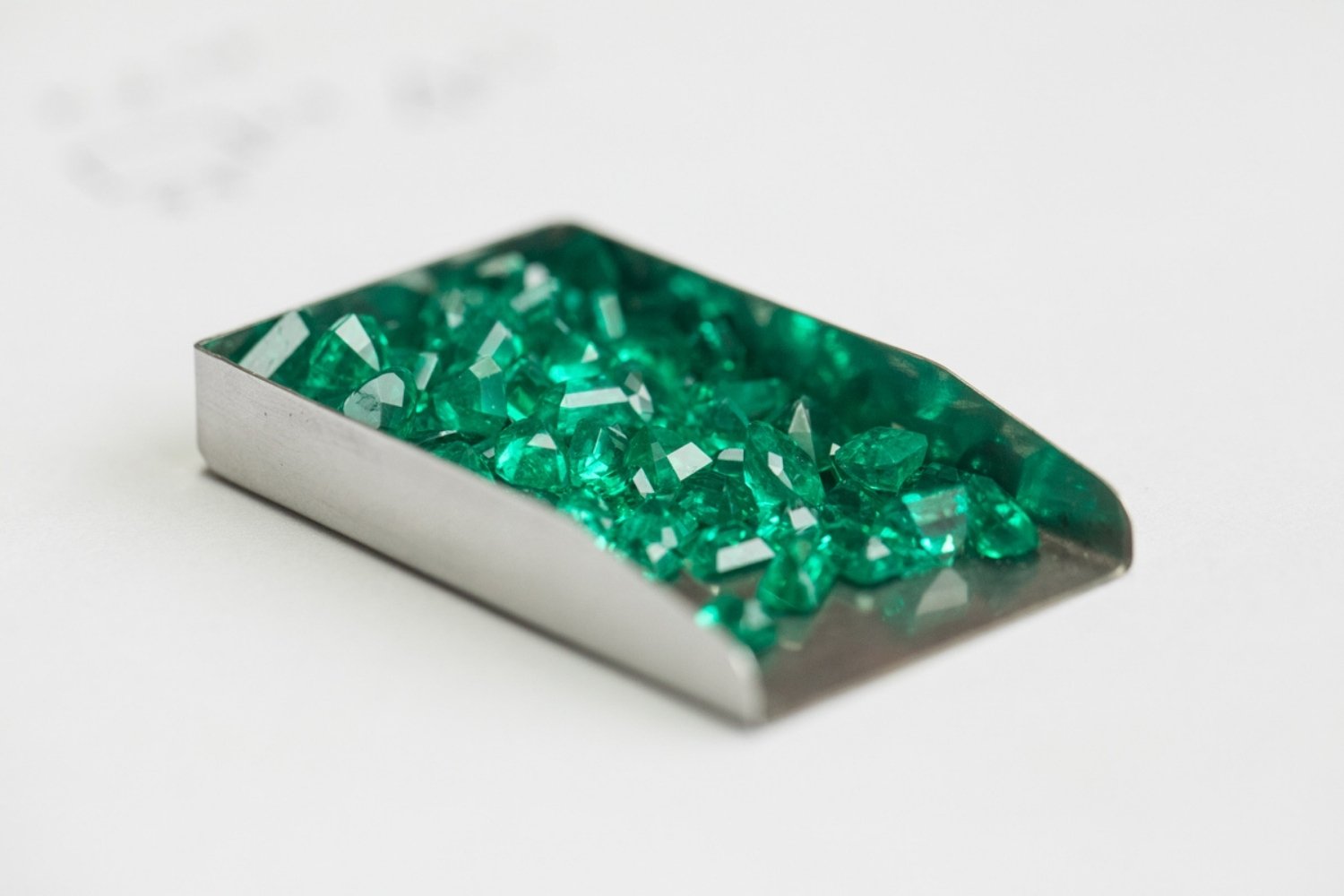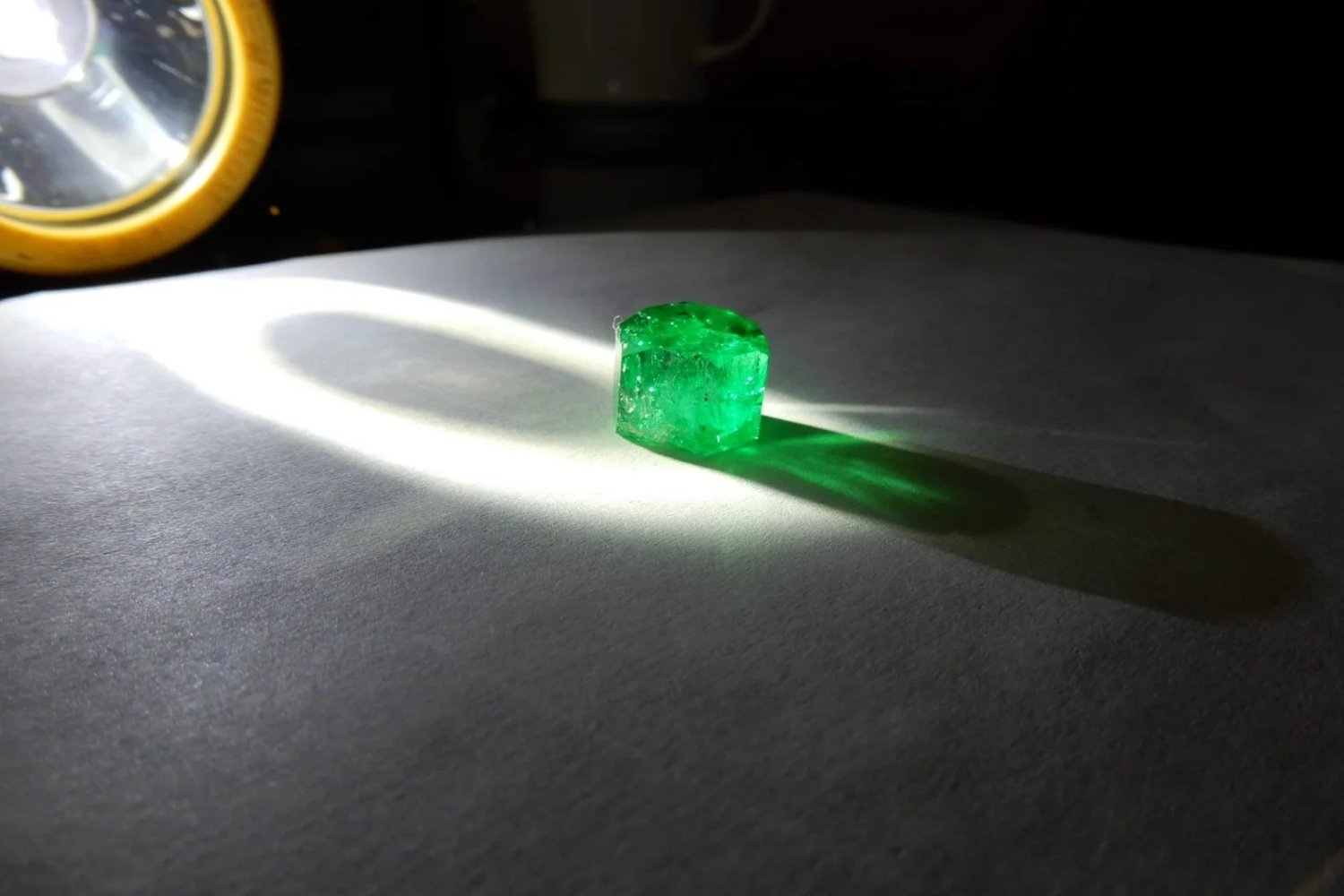Colombian emerald is globally renowned for its vivid color, exceptional clarity, and geological rarity. Sourced from legendary mines such as Muzo, Chivor, and Coscuez, the Colombian emerald stands as the most coveted green gemstone on the planet. But what exactly sets it apart from other emeralds found around the world?
The Unmistakable Color of the Colombian Emerald
The Colombian emerald is instantly recognizable by its deep, vibrant green hue — often referred to as “forest green.” This extraordinary coloration comes from the presence of chromium and vanadium, combined with a unique hydrothermal formation process that occurs in Colombia’s sedimentary rock layers. Unlike emeralds from Brazil or Zambia, which form in harder granitic environments, Colombian emeralds grow in softer black shale. According to gem expert Ronald Ringsrud, this creates an optimal environment for crystal development, resulting in greater transparency and purity. The result is a luminous stone that seems to glow from within.

A Gem of Remarkable Purity
In the world of gemstones, clarity plays a critical role — and Colombian emeralds are celebrated for their exceptional purity. While inclusions (known as “jardin”) are typical in emeralds, those from Colombian mines like Muzo and Chivor tend to be delicate, well-distributed, and less intrusive.
This natural clarity often requires minimal oil treatment, a common practice used to enhance appearance in lower-quality stones. Moreover, the low iron content found in Colombian emeralds contributes to their exceptional brightness and transparency, increasing their appeal to high-end jewelers and collectors alike.
Legendary Mines That Define the Colombian Emerald
The story of the Colombian emerald is also the story of its origin. Colombia is home to the three most famous emerald mines in the world: Muzo, Chivor, and Coscuez. Each mine produces gems with distinct visual qualities.
Muzo: Known for the iconic “Muzo green,” these emeralds exhibit a deep, saturated tone and incredible transparency. The mine’s centuries-old history has made it synonymous with excellence.
Chivor: Produces emeralds with a slightly bluish tint and remarkable clarity. Rediscovered in the 20th century, Chivor’s gems are now favored for their brilliance and unique glow.
Coscuez: A rising source in the modern era, producing high-quality stones that reflect the best of Colombia’s geology and mining expertise.
Each of these regions contributes to the legend of the Colombian emerald and reinforces its status as the most desirable emerald in the world.
A Gemstone Steeped in History
The legacy of the Colombian emerald dates back to pre-Columbian civilizations. Long before the arrival of the Spanish conquistadors, indigenous peoples such as the Muisca and the Quimbaya considered emeralds sacred, using them in rituals, jewelry, and as offerings to the gods. These early cultures mined the gemstones from the very same regions still active today.
When the Spanish arrived in the 16th century, they were astonished by the brilliance and abundance of these green stones. Driven by greed and fascination, the conquistadors seized control of the mines, especially Muzo, and began exporting emeralds to Europe and Asia, where they quickly became prized possessions of royalty and the elite.
This colonial legacy cemented the global reputation of Colombian emeralds as symbols of wealth, power, and mystique — a status that remains unchanged to this day.
A Geological Marvel Unlike Any Other
What truly separates the Colombian emerald from its global counterparts is its geological formation. Unlike emeralds from Brazil or Africa that form in igneous rocks, Colombian emeralds emerge from rare hydrothermal processes. These conditions — only found in Colombia’s Andes — create emeralds with unmatched saturation, brilliance, and depth.
This singular origin makes the Colombian emerald not just a gemstone, but a geological masterpiece.

